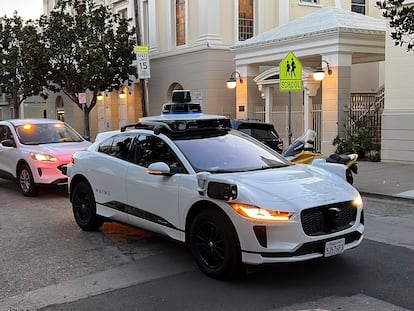The 12 rarest cars on Fiat’s Heritage Hub
In the company’s old Italian factory of Mirafiori, Turin, some peculiar, lesser-known projects hide among the most famous vehicles
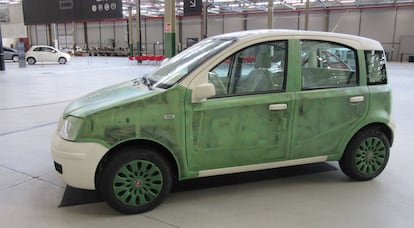
After 122 years of existence, the legacy of the Fiat brand is vast. And now, under the new structure of the Stellantis group, its Heritage Hub of classic cars brings together the best of its collection so enthusiasts can admire them, all in perfect condition, in a permanent exhibition housed at its former Officina 81, at the historic Mirafiori industrial complex in Turin, Italy. It is a one-of-a-kind selection made possible by the meticulous restorations carried out by the Officine Classiche workshops in the adjacent Officina 83.
Among the countless jewels that this recently inaugurated museum contains, there are dozens of models that dazzled the public in their day thanks to their attributes and their epic sporting triumphs. However, among all these automotive icons, one can discover others, less known but not less important; decisive examples of the long history and the great innovations of the legendary Italian brand.
AR 51 Campagnola (1951)
Fiat decided to break the record for the crossing of the African continent with this light 4×4 reconnaissance vehicle that is similar to the Jeep, designed by Dante Giacosa and manufactured mainly for the Italian army and security forces.
Starting from Algiers and, after reaching Cape Town, exploring the route and establishing supply points, the expedition returned to the Algerian capital in the shortest possible time. The Campagnola made the return trip in 11 days, four hours and 54 minutes, setting a record that is still unbeaten.

Abarth 750 Record (1956)
It was a time when many car manufacturers were striving to set records of all kinds, and this aerodynamic, record-chasing concept car designed by Bertone was unveiled to great anticipation at the Turin Motor Show.
It was equipped with a Fiat 600 engine boosted up to 47 HP to reach a maximum speed of 190 km/h. That same year, and on the legendary Monza circuit, it broke no less than six records in its category.
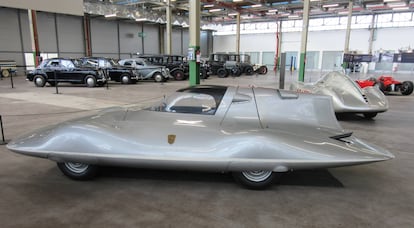
City Taxi (1968)
The Fiat Style Center materialized this design created by Pio Manzù with the aim of making a vehicle for public use within the urban context. The body is asymmetric, offering a wide sliding door on the right side to facilitate passenger access, and the interior has everything necessary to fulfill its function as a taxi, including a radio phone that people could use to communicate while traveling.
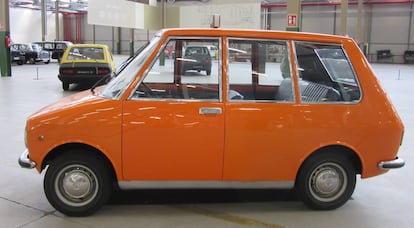
ESV 2000 (1971)
Along with its predecessor, the ESV 1500, it was the first safe car prototype in Europe. Its name stands for Experimental Safety Vehicle, and it came with a Fiat 128 engine under a modular structure. It protected its passengers from impacts with an elastic waist; the pedestrians were safe in case of a collision thanks to a protruding bumper.
Fiat took advantage of the experiences obtained in the ESV tests to improve the safety of its subsequent street models.
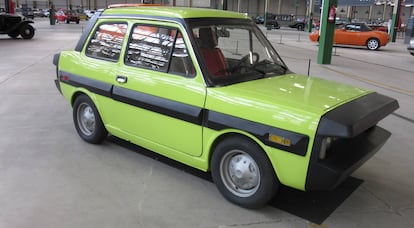
X1 /75 (1972)
In the midst of the oil crisis, this prototype was developed to reduce fuel consumption as much as possible. It was a moving laboratory in which a small twin-cylinder diesel engine tested innovative technologies such as direct fuel injection, turbocharging or the continuously variable automatic gearbox. It traveled 40 kilometers with one liter of diesel, and served to improve the mechanics developed during that decade by the Fiat group.

Panda Elettra (1990)
An electric car ahead of its time. It was the result of a collaboration with the Austrian brand Steyr-Puch and remained in production until 1998. Its lead-acid batteries gave it a range of 100 kilometers at speeds of up to 70 km/h. It was one of the first mass-produced electric cars in Europe. In 1992, it was improved with a more modern nickel-cadmium battery that enhanced its performance.
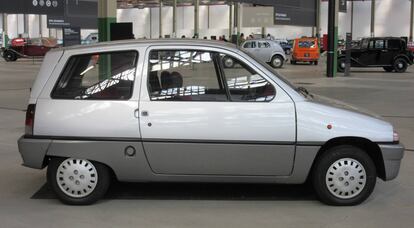
Downtown (1993)
Presented at the Geneva Motor Show, it was an urban model with three seats and an electric engine that incorporated great advances in its technology, such as a sodium sulphate battery, a modular structure with reusable materials, airbags, an electronic navigation screen and seats that could be adjusted to fit adults or children.

Zic (1994)
The result of collaboration between various European development centers, this was a prototype car with a very low environmental impact. To achieve a very light weight, its body was made of aluminum and it used composite materials https://motor.elpais.com/tecnologia/el-electrico-espanol-fabricado-con-lino-y-por-menos-de-40-000-euros/such as thermoplastic or resins in the lining panels. Fully electric, it housed the battery in a central section so that it did not take away space from the rear seats, and the design favored interior habitability, ergonomics and view.
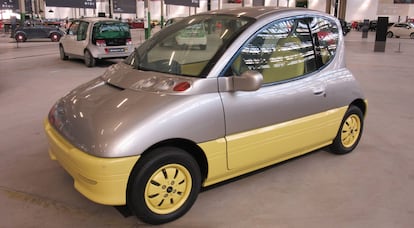
Ecobasic (1999)
This 11-feet long prototype was another experimental vehicle on which Fiat explored urban mobility and the recycling of its vehicles. It stood out for its aerodynamic efficiency (Cx=0.28) and for its low weight, thanks to an abundance of plastic in its manufacture. It had a small 60 HP 1.2 turbo diesel engine with a robotic transmission with no clutch that reached a maximum speed of 160 km/h.
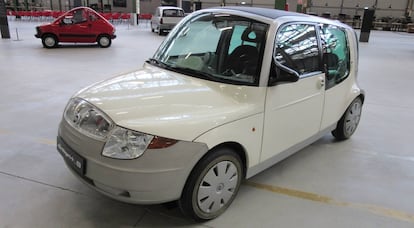
Panda Aria (2007)
At the start of the new century, Fiat made this prototype with ecology in mind, assessing the possibilities of a small 80 HP two-cylinder 0.9 turbocharged engine that could run on alternative fuels such as methanol-gasoline or methanol-hydrogen. In addition, its interior was made of ecological materials such as natural cotton and linen fabrics, coconut fiber and other biodegradable compounds.

PanDakar (2007)
Fiat embarked on an intrepid adventure by entering two Pandas in the toughest race in the world, the Dakar. Based on the Panda Cross, these racing cars were driven by Miki Biasion and Bruno Saby. However, even with such renowned champions in the team, the demanding competition showed no mercy, and they had to quit in the fifth stage of the rally.
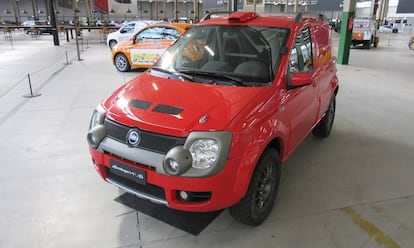
Fiat Panda Monster Truck (2012)
Fiat surprised the attendees of the Paris Motor Show with its Panda 4×4, an unusual utility vehicle with an electronically managed all-wheel drive. To mark its launch, it created this monstrous all-terrain that adopted the chassis of a Jeep https://motor.elpais.com/coches-electricos/avenger-el-primer-jeep-100-electrico-de-la-historia/CJ7 and was https://motor.elpais.com/coches-electricos/avenger-el-primer-jeep-100-electrico-de-la-historia/equipped with tractor wheels that made it able to overcome any obstacle, and which raised the height of this spectacular machine to 13 feet.
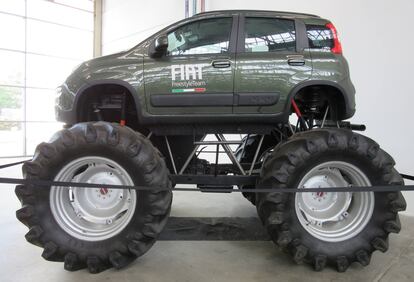
Sign up for our weekly newsletter to get more English-language news coverage from EL PAÍS USA Edition
Tu suscripción se está usando en otro dispositivo
¿Quieres añadir otro usuario a tu suscripción?
Si continúas leyendo en este dispositivo, no se podrá leer en el otro.
FlechaTu suscripción se está usando en otro dispositivo y solo puedes acceder a EL PAÍS desde un dispositivo a la vez.
Si quieres compartir tu cuenta, cambia tu suscripción a la modalidad Premium, así podrás añadir otro usuario. Cada uno accederá con su propia cuenta de email, lo que os permitirá personalizar vuestra experiencia en EL PAÍS.
¿Tienes una suscripción de empresa? Accede aquí para contratar más cuentas.
En el caso de no saber quién está usando tu cuenta, te recomendamos cambiar tu contraseña aquí.
Si decides continuar compartiendo tu cuenta, este mensaje se mostrará en tu dispositivo y en el de la otra persona que está usando tu cuenta de forma indefinida, afectando a tu experiencia de lectura. Puedes consultar aquí los términos y condiciones de la suscripción digital.
More information
Archived In
Últimas noticias
Cubans look to Venezuela fearfully after Trump’s incursion: ‘We could be next’
The operation in Venezuela to capture Maduro threatens to widen the cracks in the MAGA movement
Trump clarifies who is ultimately in charge in Venezuela: ‘Me’
Maduro pleads not guilty before the federal court in New York: ‘I am still the president of Venezuela’
Most viewed
- Alain Aspect, Nobel laureate in physics: ‘Einstein was so smart that he would have had to recognize quantum entanglement’
- Gilles Lipovetsky: ‘If you want to live better and fall in love, take Prozac, don’t look to philosophy’
- Alvin Hellerstein, a 92-year-old judge appointed by Bill Clinton, to preside over Maduro’s trial in New York
- Cuba confirms death of 32 of its citizens in the US attack against Venezuela
- Why oil has been at the center of Venezuela-US conflicts for decades

